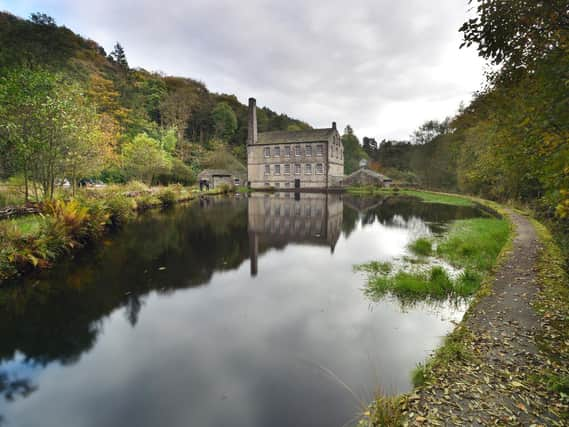More than half of people in Calderdale headed into nature at least once a week before lockdown


And as cars vanish from the roads and planes are grounded, reports are emerging of wildlife springing back up as humans head inside.
Once the pandemic is over, wildlife and conservation charities say they want people across the country to engage with the natural world even more.
Advertisement
Hide AdAdvertisement
Hide AdGovernment figures show that, before current restrictions began, Calderdale residents were reasonably outdoorsy.
Data from Natural England shows that 58% of locals aged 16 or over spent time outdoors at least weekly.
The median rate – the middle value of a range of figures – for council areas across England was also 58%.
Local figures are based on 10 years’ worth of surveys from the government body's Monitor of Engagement with the Natural Environment report, the final of which was completed in 2018-19.
Advertisement
Hide AdAdvertisement
Hide AdIt includes visits to parks, canals and other urban open spaces as well as rural settings.
According to the results of the latest survey, 70% of adults across Yorkshire and The Humber headed outdoors at least once a week – putting it fifth out of the nation's nine regions.
Across England, the rate has risen over the last 10-year period, from 54% in 2009-10 to 65% in 2018-19.
Paul Bunton, from the woodland conservation charity the Woodland Trust, said: “We are pleased that the trend seems to show that people are spending more times in the outdoors, albeit in the current crisis they need to heed government advice and not travel to our woods at this time.
Advertisement
Hide AdAdvertisement
Hide Ad“We understand the many positives of visiting woods – they are wildlife havens, a way to destress, have an adventure and learn about their importance, for example in tackling climate change."
Where people do not have woodland on their doorstep, Mr Bunton suggested going to the nearest park, adding that the charity had "huge aims" to increase tree cover and protect urban trees.
He added: “All of this, and our woodlands, will be there to enjoy once the current national crisis abates.”
Craig Bennett, chief executive of the Wildlife Trusts, said people were turning to nature more than ever as the world faced health, climate and ecological emergencies.
Advertisement
Hide AdAdvertisement
Hide AdHe said: "When the pandemic has passed, there is a battle to resume – to restore nature and to empower people to take action for the natural world.
"At the Wildlife Trusts, we have a pivotal role to play and have a clear understanding of the urgency.”
The group – a movement of 46 charities across the UK – wants at least a third of land and sea handed back to nature by 2030.
A Department for Environment, Food and Rural Affairs spokeswoman said people should follow the Government’s guidance on using green spaces during the Covid-19 outbreak:
Advertisement
Hide AdAdvertisement
Hide Ado Stay local and use open spaces near to your home where possible – do not travel unnecessarily.
o Only go outside alone or with members of your own household.
o Keep at least two metres apart from anyone outside your household at all times.
o Take hygiene precautions when you are outside, and wash your hands as soon as you are back indoors.
o If walking your dog in areas used by other people, keep them on a lead to ensure you can safely keep two metres away from others.
